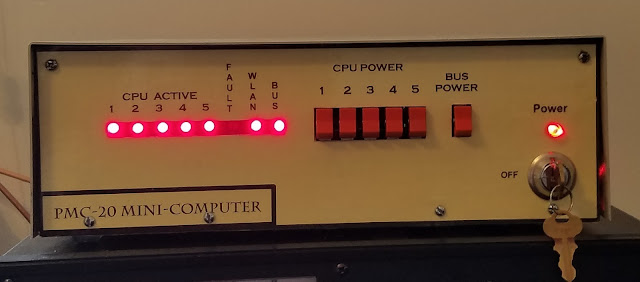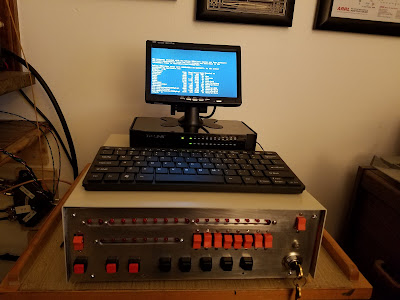It's Called the PMC20

Well, it's coming together. After 9 months of building, rebuilding, and writing a lot of code, I have a working minicomputer. Overview PMC-20 (Personal Mini Computer) is the minicomputer I designed. It is a 5 processor design with 20 CPU cores. It can easily handle 64 simultaneous users running MPE, the operating system I wrote. The operating system is built on the best of the commands I've used from Prime Computer's Primos, DEC's RSTS, unix, GNU Linux, and some that I always thought should be there. The operating system is a set of commands, a custom shell, a specialized directory structure and background processes that ride on top of a Linux kernel. The kernal handles the hardware, MPE does the rest. MPE, or Multi user Programming Environment, is written as a typical 1980's minicomputer/mainframe operating system. It has job control, a multi user accounting package, about 50 built-in commands in the shell which allow the user to create, edit, delete

